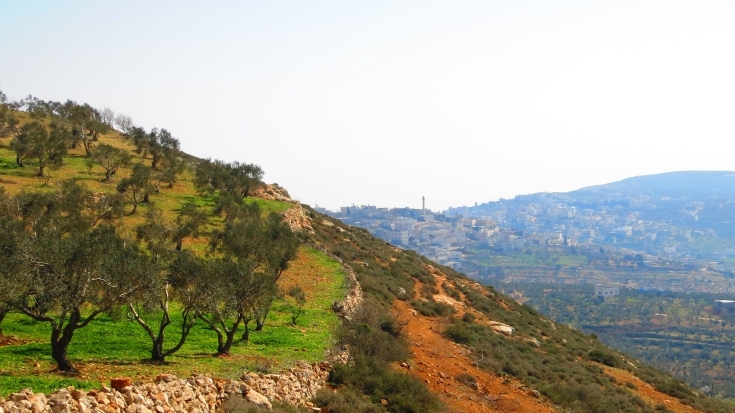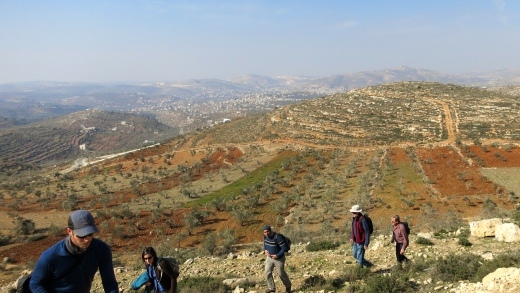Abraham Path, or Masar Ibrahim in Arabic, is a cross-cultural, long-distance tourism route running along the path once walked by Abraham/Ibrahim, the father of Islam, Christianity and Judaism. More than 400 km long, it currently connects 40 communities across four countries and will eventually cross nearly 5,000 km and ten countries in the Middle East. By building economic, human, social, and cultural capital in rural communities, the path represents an innovative approach to not only tourism, but also economic development and peacebuilding.
Along the path, walkers enjoy homestays and homemade meals with local Palestinian families, and local guides show the way while sharing their knowledge of the region’s history and culture. Both put money into the local economy in a significantly more important way than do the existing day trips to Bethlehem, which make up the majority of current tourism in Palestine. More than 4,000 people have hiked the trail since 2008, most in Palestine and Jordan.
The growing popularity of Abraham Path aligns with an increasing trend in global tourism: international adventure travelers seeking meaningful trips to places where few have gone before. They desire authentic and unique experiences that do not entail traditional luxury and comfort. These travelers also seek higher ethical and corporate social responsibility standards and see themselves not so much as package tourists, but as contributors to new ideas, encounters and ways of traveling. Exploring small villages and towns normally ignored by mainstream tourism is becoming part of that meaningful travel they seek.
Support for experiential and cultural tourism offerings like Abraham Path is also an innovative way to create jobs in poor, rural communities and reach often excluded groups such as women and youth, in turn reducing poverty and boosting shared prosperity. Women are the key hosts along the Abraham Path, managing and preparing lodging and food while not necessarily having to leave their homes (which is important in traditional, rural Arab households). Local organizations help boost the sale of local women’s handicrafts to walkers who pass through, or stay, in their villages. Youth acquire and hone foreign language skills with walkers and gain an early leg up into their careers – while acting as guides to those passing through.
In addition to the economic gains generated from the path, communities benefit from increased social and cultural capital – the respect, understanding, and knowledge gained as a result of welcoming outside visitors into their homes and communities. The longstanding Palestinian tradition of hospitality, based on mutual trust and reciprocity, is integral to Abraham Path and connects local communities to other people and places, near and far. William Ury, founder of the Abraham Path Initiative, shared at a recent World Bank roundtable the words of a Palestinian community member that the path “connects us to the world and brings us hope.” The path helps shift outside perceptions and brings a renewed sense of local cultural identity.



